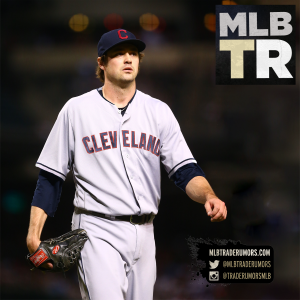The Indians are at least opening the door to the possibility of utilizing Carlos Santana in left field when the World Series moves to Wrigley Field and takes the DH off of the table, as Paul Hoynes of the Plain Dealer reports. It doesn’t seem as if there are any clear plans to play him there — he hasn’t roamed the outfield grass since the minors — but the team is getting him some reps just in case. Even if Cleveland won’t start Santana in left just in order to get his and Mike Napoli’s bats into the same lineup, it’s not impossible to imagine a late-game substitution scenario that calls for such a bold move.
Here’s more from Cleveland with the fall classic set to get underway:
- How exactly did World Series Game 1 starter Corey Kluber end up with the Indians? Derrick Goold of the St. Louis Post-Dispatch compiles something of an oral history of the 2010 trade that brought the relatively unknown righty to Cleveland. With the Padres and Cardinals each looking for veteran assets, the Indians were able to facilitate their needs by taking Kluber. Then-Cleveland GM Chris Antonetti said at the time that he preferred not to be on the prospect end of such trades, though certainly that move helped set up the team’s current run — which included a deal that sent young talent out for the player who’s the subject of the next bullet.
- We’ve increasingly heard chatter — as is typical this time of year — about how postseason teams can serve as a model for other organizations in the ensuing winter. While I’d argue that the value of premium relief arms seems worth paying attention to, it does seem curious to hear discussion of whether teams could look to emulate the specific pen usage of roving Indians out-machine Andrew Miller. That approach isn’t likely to carry over into the regular season, Russell Carleton of Baseball Prospectus suggests (subscription required — and recommended) in a detailed and interesting analysis. Relievers are simply not as effective when they re-appear for a second inning of work, Carleton finds, and managers rightly need to be more judicious in deploying their most valuable relief-pitching-innings — those handled by their best relievers — over the course of a long season. Unless and until some team decides to really push the boundaries of how much of an innings workload a reliever can handle, he says, we’ll likely continue to see a lot of one-inning relievers in relatively well-defined roles (for the bulk of the year, at least).
- When the Indians went and got Miller, it sent a meaningful message to the team’s players, second baseman Jason Kipnis tells MLB.com’s Jordan Bastian (Twitter link). But it came at a real price that could end up hurting down the line — as is the nature of deadline deals (see Kluber, Corey). Jon Heyman of Fan Rag reports that Cleveland offered much more than any other team to grab Miller. But that was what it took to pry him loose, since the Yankees were under no obligation to swing a deal for a player with two more seasons of control remaining. With the Giants unwilling to move Joe Panik and the Nationals not interested in boosting their offer of young pitching talent, New York would’ve held pat had the Indians not offered up a prospect package made up of outfielder Clint Frazier, southpaw Justus Sheffield, and right-handers Ben Heller and J.P. Feyereisen.
- Before getting that deal done, of course, the Indians had a pact in place for catcher Jonathan Lucroy that only fell through when he exercised his no-trade protection to nix it. As ESPN.com’s Jerry Crasnick reports, Lucroy doesn’t regret utilizing the clause — even with the Indians now in the World Series. The veteran receiver landed in a good spot, helping the Rangers lock up an AL West title, and he’s not interested in revisiting things now. “I’m not worried about it at all,” he said. “It’s over with and in the past.”
